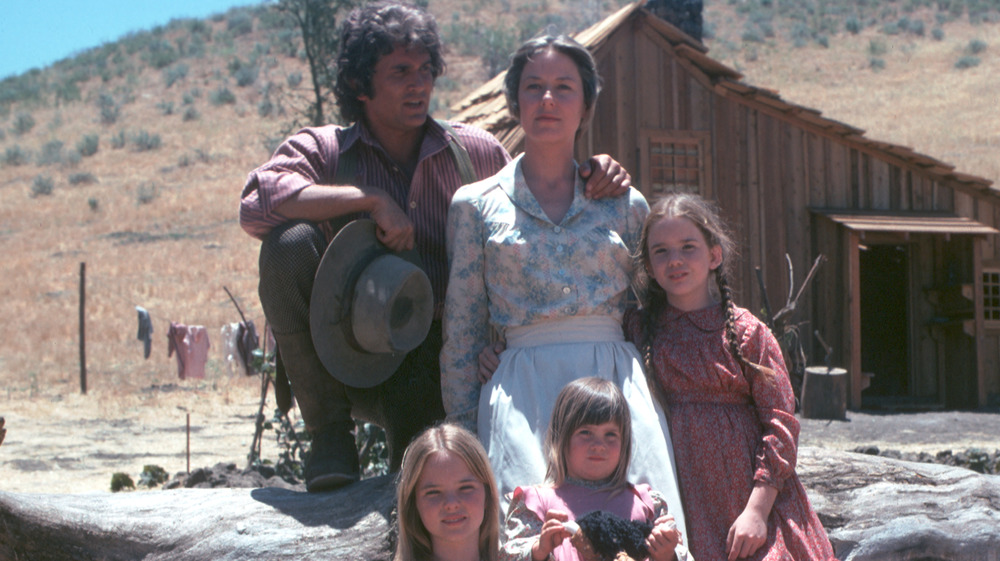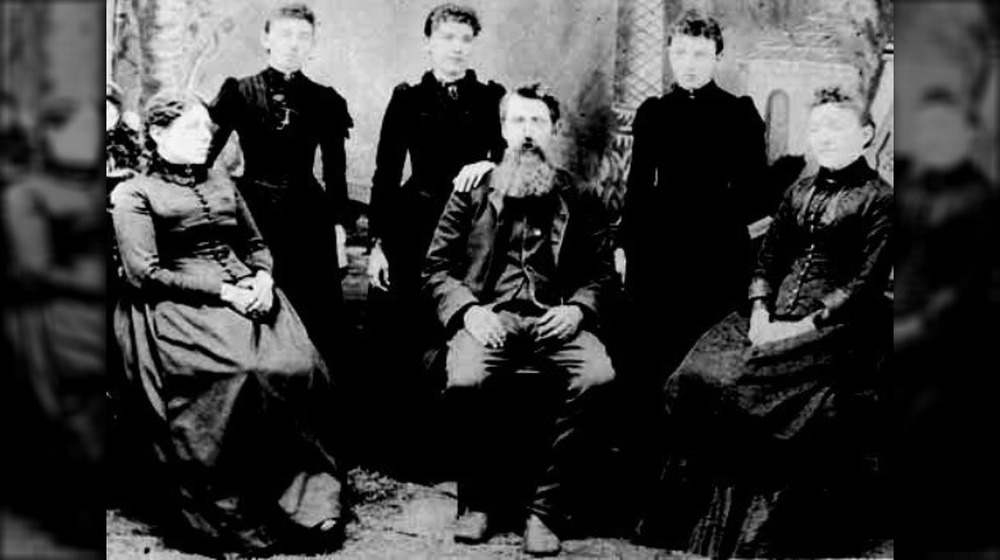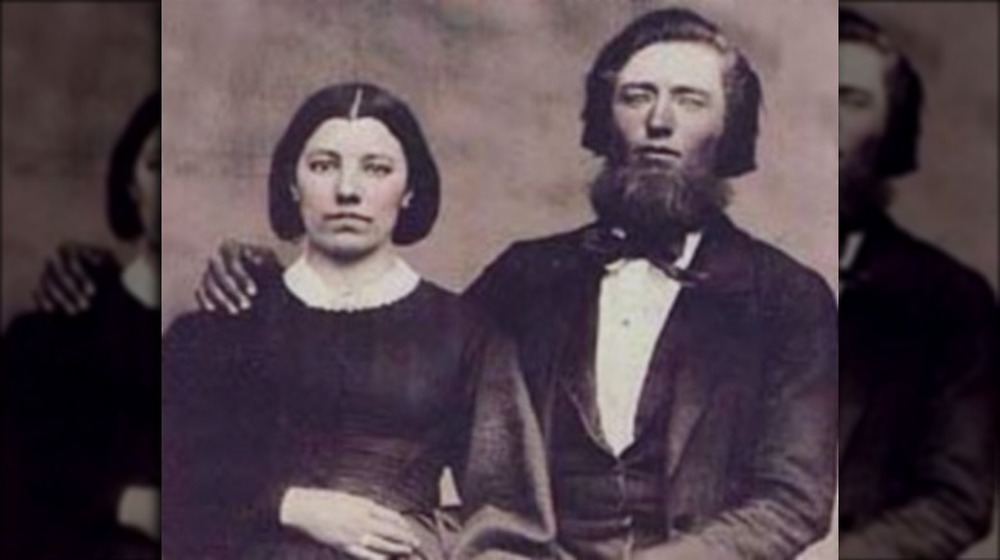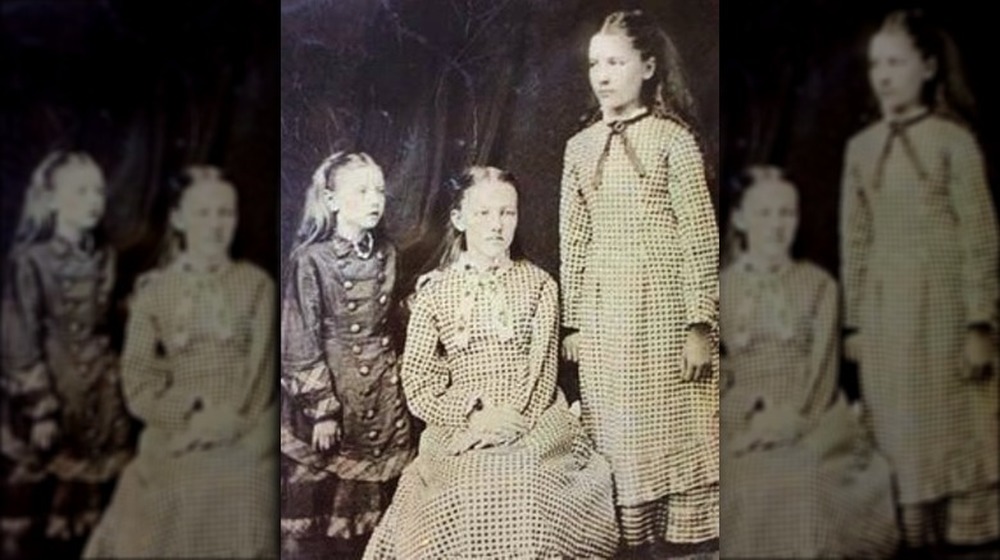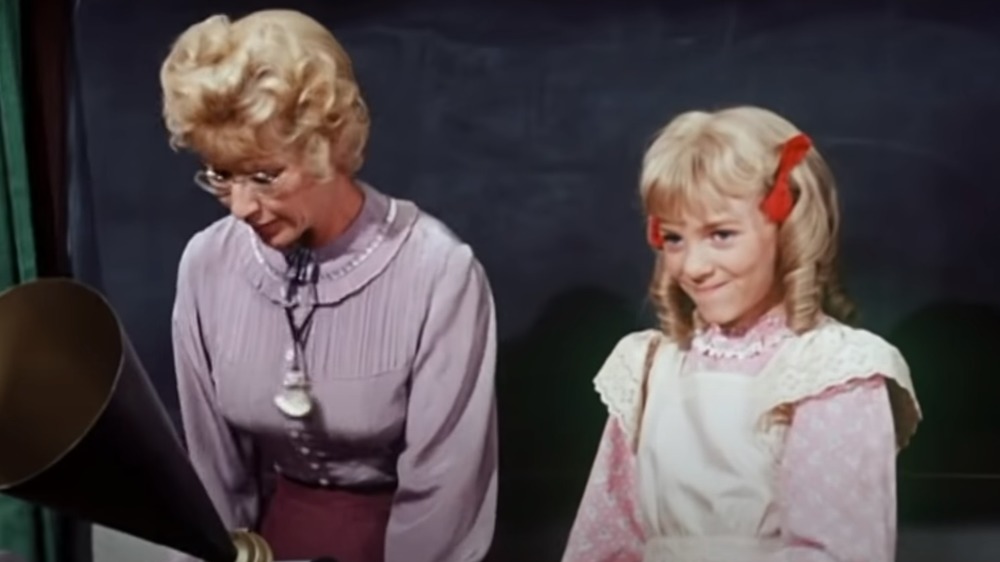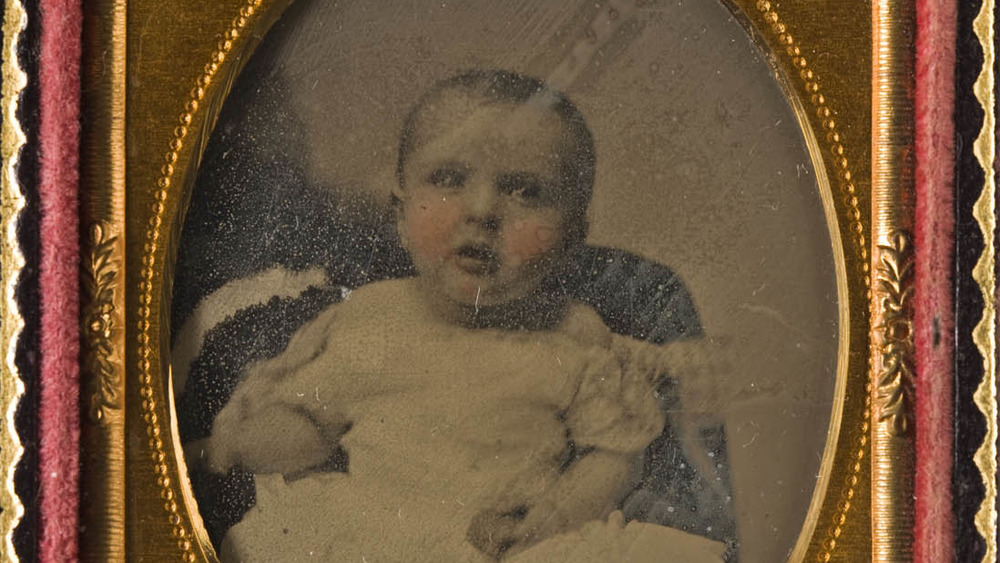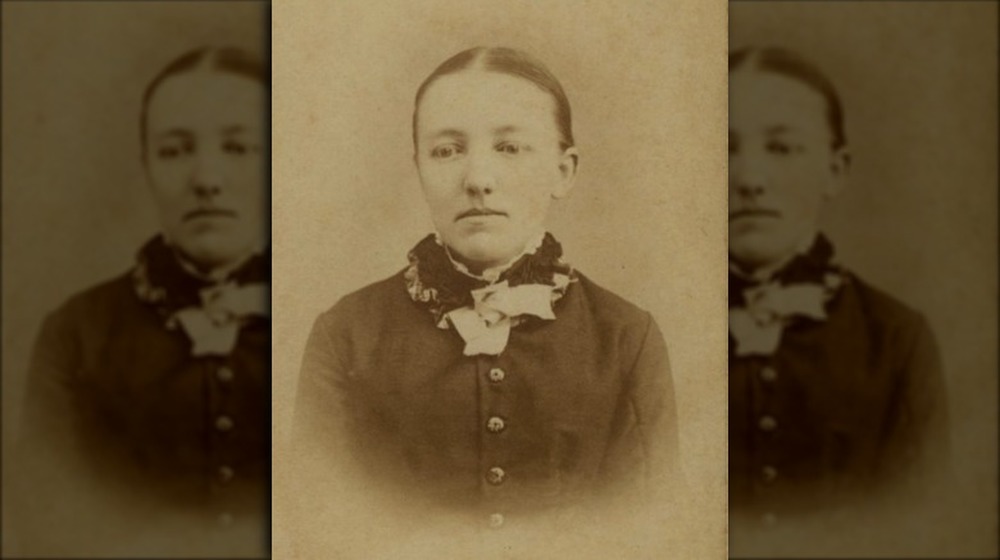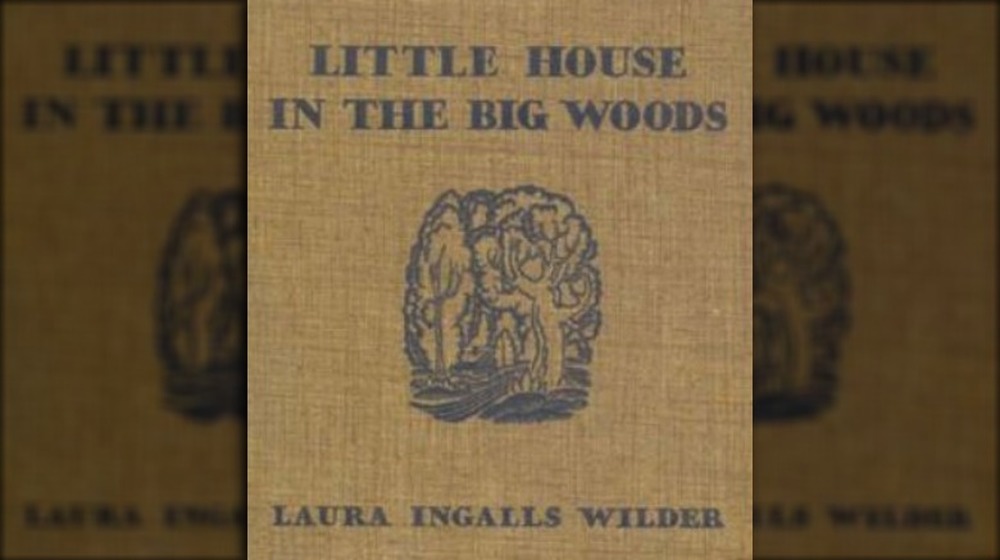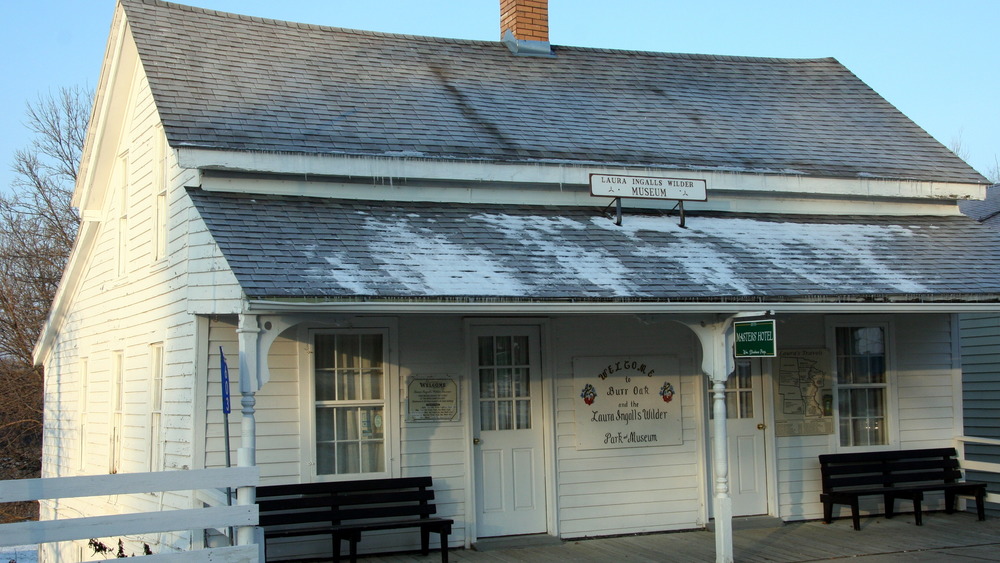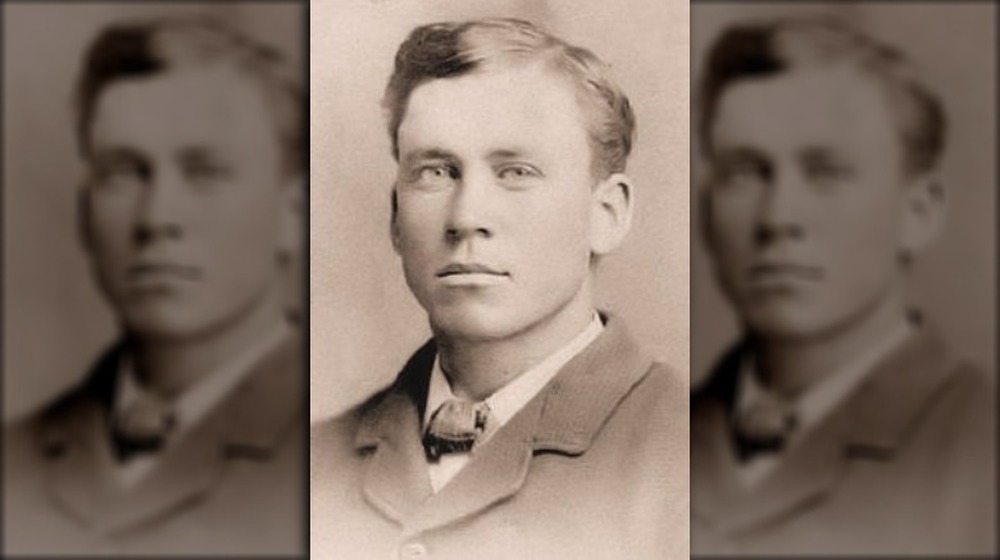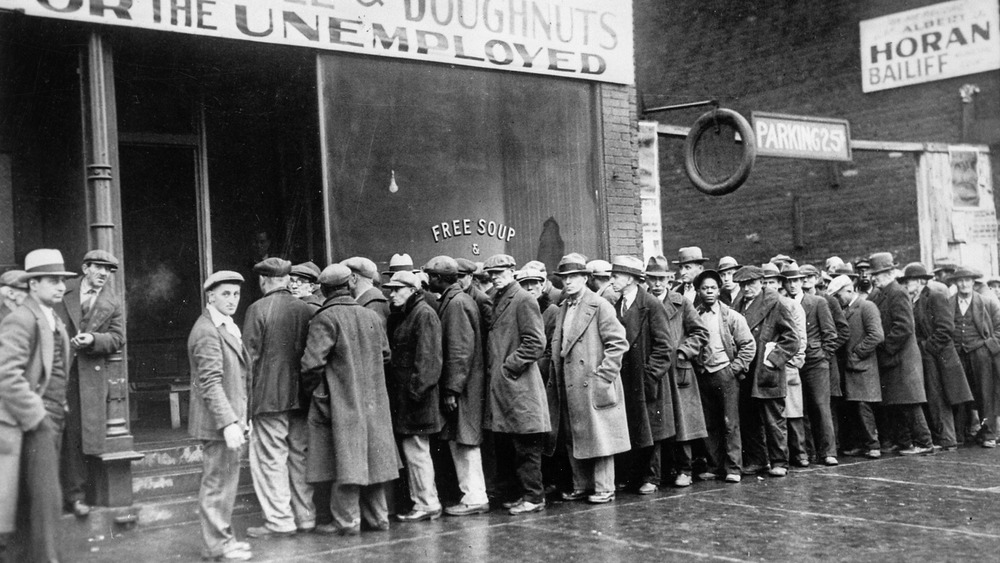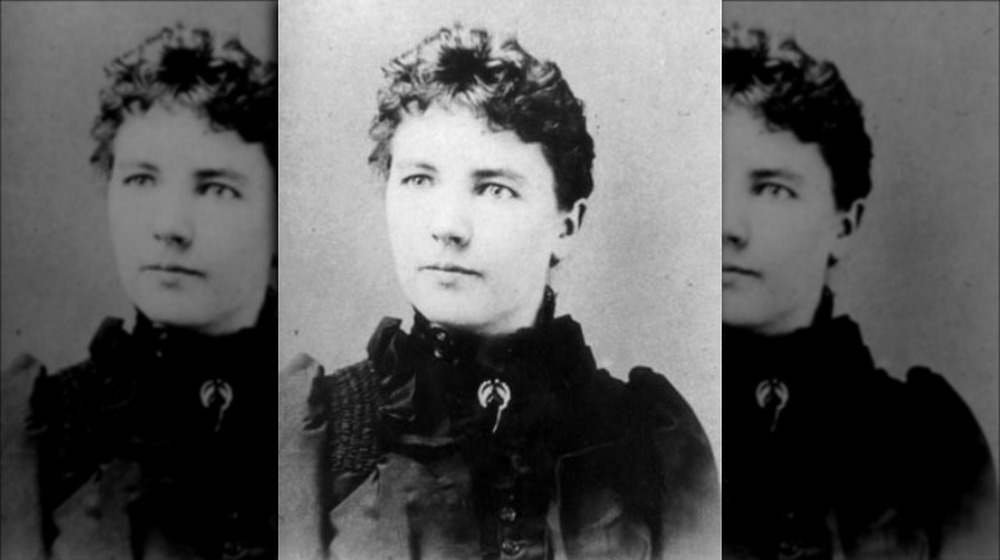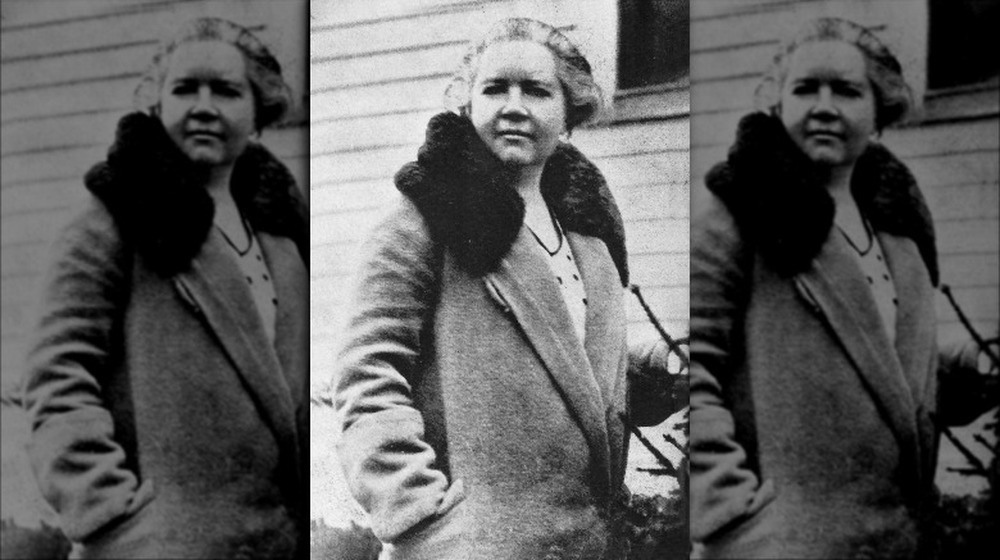The True Story Behind Little House On The Prairie
For many American students, it was practically required read one or two of the books in the Little House series written by Laura Ingalls Wilder. Published from 1932 to 1943, according to Politico, the series included entries like Little House on the Prairie. That title was borrowed for the immensely successful 1970s television series starring Michael Landon as Charles "Pa" Ingalls.
Readers throughout the decades have become enamored with the cozy family life and hardworking pioneer ethic enshrined in Wilder's book series. Yet, how much of the true history of Laura Ingalls Wilder's life is depicted in the Little House series? Very few things written down by Wilder and her daughter, Rose Wilder Lane, could be called outright lies. However, even a cursory look into the history of the Ingalls and Wilder families hints at some careful editing. Awkward or traumatic experiences were conveniently left out of the books. Things like grinding poverty, the death of an infant brother, and encounters with 19th-century racism never made it into the Little House books that you may have read with your class in grade school.
That sort of editing may be considered appropriate for books intended for young readers, but older fans may have missed out on the true story behind Little House on the Prairie and its fellows in Wilder's book series. What really happened to Laura and her family is more complicated and often quite a bit darker than what made it into her books.
The Ingalls family experienced real poverty
Though the Little House books presented an idyllic view of pioneer life, the reality faced by the Ingalls family was often pretty different. In fact, like so many of their contemporaries on the American frontier, they had to deal with serious poverty.
Young Laura understood her family's situation, according to Prairie Fires by Caroline Fraser. She frequently overheard her parents discussing finances, fretting over the debts that always seemed to pile up. There were grocery bills, rent, and medical expenses after the birth of her younger sister, Grace. A local doctor's wife offered to "adopt" Laura, which her mother Caroline declined. Laura's mother may have thought that the offer was a coded proposal to put Laura into "peonage," letting her work in someone else's home as a "debt slave" to pay off the Ingalls' accounts.
Both Ma and Pa, as they were known in the books, sacrificed much for the family. The Irish Times reports that Laura's father often left the dinner table early, in an attempt to leave more food for his wife and daughters. At one point, Pa had to sign a document in front of county officials declaring that he was "wholly without means." This sacrifice of his dignity earned the family a barrel of flour.
Charles Ingalls moved his family incessantly
For much of their collective history, the Ingalls family couldn't seem to stay in one place. Charles Ingalls blamed his "wandering foot" for the constant moving, but the financial pressures on the family seem to have played a pretty significant factor in at least some of their wanderings.
Those wanderings really added up. According to Minnesota Public Radio, the Ingalls family racked up around 2,000 miles of travel over 20 years, much of it done with horse-drawn wagons and simply walking on foot. Starting in Pepin, Wisconsin, they went as far south as Kansas, constantly doubling back in search of better opportunities, from new jobs to supposedly more arable farmland.
Independence, Kansas, their first stop outside of Wisconsin, held the promise of land guaranteed by the Homestead Act of 1862. However, Charles and family built their cabin on land that still technically belonged to the Osage tribe. When word got out that U.S. soldiers might come through and kick illegal homesteaders off the land, the family decided to move first. Their other homes included Walnut Grove, Minnesota, where they lived in a dugout for a while; a rather rowdy hotel in Burr Oak, Iowa; and De Smet, South Dakota, where Charles' "wandering foot" seemed to calm down, and the family finally settled for good.
Ma and Pa Ingalls were complicated parents
Despite the poverty and constant moving, the Ingalls parents worked hard to provide some level of stability and happiness for their children. Charles especially seemed to be a romantic, adventurous type who loved music, traveling, and the wilderness. As the National Endowment for the Humanities points out, Wilder herself believed that she inherited some of her father's romanticism, saying that she owed "whatever religion, romance and patriotism I have ... to the violin and my Father playing in the twilight." Once, while the family lived in a doorless dugout in the middle of the prairie, Charles woke Laura to show her the wolves that had wandered nearby. The two looked at the animals, their fear mitigated by mutual wonder. "See how his coat shines," Pa told Laura.
As the website Little House on the Prairie argues, Caroline often had to pick up the slack left by her romantic and sometimes impractical husband. She was prepared to protect her children by staying up with a pistol nearby, for instance. Caroline was frequently called upon to provide stability and strength for Laura and her other daughters in tough conditions, some brought on by the constant moving and financial instability faced by their family.
Nellie Oleson wasn't real
For readers of the later Little House books or fans of the 1970s television adaption of those same works, Nellie Oleson looms large as a spoiled bully. If we go by the narrative, she was seemingly put on Earth to make Laura's life miserable. Her antics begin more or less with her appearance in On the Banks of Plum Creek and stretch on into These Happy Golden Years, when she attempts to lure away Laura's beau, Almanzo.
The truth, however, is quite a lot more complicated, especially when you realize that Laura herself is a biased narrator. First of all, as author Tracy Lawson points out, Nellie Oleson never actually existed. Instead, her character is based on three childhood nemeses: Nellie Owens, Genevieve Masters, and Stella Gilbert.
Though Laura would later state that, "I am sure she was much more unhappy than she ever could have made me," readers often get the sense that the grown Laura still wanted a touch of revenge. She chastises her semi-fictional child self for getting back at Nellie on occasion, but then there's always Pa in the background, eyes twinkling and tacitly approving Laura's retaliation.
As Prairie Fires reports, the adult Laura often kept up the fiction that Nellie was a real person, rather than a composite character. When readers asked what happened to Nellie, Wilder would often vaguely say that she had moved back East somewhere.
An Ingalls brother was cut out of the Little House books
Fans of Little House on the Prairie might think that Ma and Pa had only daughters, including Mary, Laura, Carrie, and Grace. However, in between Carrie and Grace, the couple had their first and only son, Charles Frederick, in November 1875. Tragically, Freddie, as he was called, lived for only a short time. According to the biography Laura Ingalls Wilder by Sallie Ketcham, Freddie began to grow ill when he was about eight months old, when Laura herself was eight years old. It's not clear what, exactly, made him ill, but he began experiencing diarrhea so severe that it became life-threatening. Laura wrote that Freddie "got worse instead of better, and one terrible day straightened out his little body and was dead."
The tragedy of his early death was cut out of the books, perhaps because this was Laura's first real experience with death and grief. For the rest of her life, she was careful to avoid similar subjects, especially where children were involved. If that really was a trauma that haunted Laura for the rest of her life, it makes sense that she would simply cut it out of a book series that was meant to evoke warm, familial feelings more than the sometimes very grim reality of life on the American frontier.
Mary Ingalls probably didn't lose her sight to scarlet fever
Mary Ingalls, Caroline's and Charles' eldest child, experienced a serious setback in her story relatively early, when a disease took her sight at the age of 14. Laura blamed scarlet fever, according to the Museum of the American Printing House for the Blind. It seemed like a cruel twist for Mary, who had been a hardworking, virtuous daughter. "Her blue eyes were still beautiful," Laura wrote of her sister, "but they did not know what was before them."
Contrary to expectations, Mary adapted to her blindness. In 1881, the 16-year-old Mary traveled to the Iowa College for the Blind. The rather progressive school, where Mary spent the next seven years of her life, gave her a higher degree of confidence and independence than she'd had in the previous two years living with her family. Though she would later return home and live with her parents and then sisters for the rest of her life, it's clear that her time at college was instrumental in changing her and her family's perspective on blindness.
A 2013 study published in Pediatrics argued that Mary's blindness probably was not caused by scarlet fever, as she and so many others must have believed at the time. A careful review of available documents, data, and epidemiological knowledge indicates that Mary was probably struck by viral meningoencephalitis. Unlike other diseases, it spared Mary from cognitive impairment afterward, but it still took her vision.
Laura's words about Native Americans and Black people have caused controversy
In 2018, the Association for Library Services to Children, a subdivision of the American Library Association, removed Wilder's name from a major literary award. According to NPR, the award's name was changed from the Laura Ingalls Wilder Award to the Children's Literature Legacy Award, due largely to stereotypical depictions of Native Americans and Black people in the Little House series.
This reevaluation of Wilder's novels has been going on for years. In 2002, Children's Literature Association Quarterly noted that books like Little House on the Prairie had a complicated and sometimes disturbing relationship with race. Wilder depicted Native people as curiosities or even as subhuman, as when she notes, in Little House on the Prairie, that "there were no people. Only Indians lived there." Furthermore, Ma sometimes expresses fear or distrust of Native Americans. Wilder, perhaps sensing that these attitudes would be poorly received by readers, conveniently assigns more virulent sentiments to neighbors, who compare Native people to "wild animals" and hope for their deaths.
Where does this put modern readers? An opinion piece in The Washington Post argues that "Whether we love Wilder or hate her, we should know her," saying that having hard discussions about race and racism in Little House on the Prairie and other books means we need to keep reading them.
A violent interlude was left out of the Little House series
In 1876, when Laura would have been nine years old, the Ingalls family moved to Burr Oak, Iowa. After years of trying to make his own way as a homesteader and farmer, father Charles was taking advantage of a new opportunity. He was to help manage the Masters Hotel in the small town, hopefully to establish a more stable income for his family. However, the family's brief time in Burr Oak was to prove so disastrous that Laura simply left it out of her later book series.
What was so bad about Burr Oak? According to Prairie Fires, when the Ingalls family moved there in 1876, the town was "dark and dirty." People were drunk in public, which would have been a shocking sight to nine-year-old Laura and her generally sober family. This move also happened shortly after their son Freddie's death at a mere eight months old.
The Irish Times reports that Laura also witnessed domestic violence, including the aftermath of an incident where a heavily inebriated man shot at his wife. At one point, Pa had to break up another incident involving the couple who lived below them after the family heard screaming. If that wasn't bad enough, they were still plagued by financial insecurity. It got so bad that the family sold their cow and left in the middle of the night, debts unpaid. An older Laura left this difficult time out of her cozy Little House books.
Almanzo Wilder was seriously affected by paralysis
Eventually, the Ingalls family settled into life in De Smet, South Dakota where, according to Ingalls Homestead, Charles filed a homestead claim in 1880. That's where an 18-year-old Laura married 28-year-old Almanzo Wilder in August 1885.
The pair attempted to make a go at farming, though Laura and Almanzo faced their own financial problems as a result, followed by serious health challenges. According to Prairie Fires, both Laura and Almanzo survived diphtheria in the spring of 1888. The couple sent their 15-month-old daughter, Rose, away for her safety. Soon after, Almanzo was struck by paralysis that left him unable to work on the farm. Both a local doctor and Laura blamed it on Almanzo working in the wake of his recovery, placing the blame for his "slight stroke of paralysis," as the doctor called it, on Almanzo's now shaky shoulders.
It was clear now that farming was not in the Wilders' future. In 1891, the family moved to warmer climates in Florida in an attempt to help Almanzo recover. As Prairie Fires reports, however, their time in Florida was brief and unpleasant. The humidity of the region was suffocating, while malaria and yellow fever ran rampant. Almanzo recovered somewhat, but his strength was never the same for the rest of his life. The small family eventually settled in Mansfield, Missouri.
The Little House on the Prairie books were Great Depression comfort food
The first book in the Little House series, Little House in the Big Woods, was published in 1932, when Laura Ingalls Wilder was 65 years old, according to the National Endowment for the Humanities. Her follow-up, an account of Almanzo's childhood entitled Farmer Boy, provided a dramatic contrast to Laura's early life. In Farmer Boy, Almanzo benefits from a seemingly endless parade of food like ham, potatoes, gravy, jams, stews, pickles, and more, enough to make a young Almanzo full but not so much that he can't finish a meal with a large slice of pumpkin pie.
This "fantasy of blissful youth," as The Wilder Life by Wendy McClure calls it, was inextricably linked to the widespread poverty of the Great Depression. So, too, is Laura's description of a relatively successful farm in Little House in the Big Woods, which was, in reality, far less stable than its quasi-fictional counterpart. Wilder's novels were a kind of Great Depression comfort food for the mind, harkening back to a more successful past where people could be well-fed and housed for honest labor. For people who, in the middle of a massive economic crisis, wondered if they could keep their homes or feed their families, this must have been a welcome escape.
Laura's success with Little House on the Prairie was complicated
Laura's daughter, Rose, eventually grew up to become a journalist and published writer. In fact, Rose's connections to the literary world helped her push her mother to write down her recollections of a childhood spent traveling through the woods and prairies of what had once been an American frontier. However, as Laura began to call up those memories, she was forced to confront past traumas that, once summoned, proved difficult for her to contain.
As she told Rose, it was difficult for Laura to work in the evening. As quoted in Prairie Fires, she said that the memories would keep her awake. "My brain goes right on remembering and it's H–," she claimed, careful even in writing not to curse.
Those memories also brought generalized anxiety and disturbing dreams, according to the Library of America, which had plagued her even before her publishing successes. Laura was especially dogged by a recurring nightmare wherein she had to walk a "long, dark road" into a strange forest, one that seemed always to bring her back to the impoverishment of her childhood.
Rose Wilder Lane changed Little House on the Prairie for political ends
Though the stories featured in the Little House series focus on Laura Ingalls Wilder's experiences as a child and young adult, she wasn't the sole writer. Her daughter, Rose Wilder Lane, had a clear hand in the stories that would be published under Laura's name. By the time the first book, Little House in the Big Woods, was published in 1932, Politico reports, Rose was already a published writer herself. She was also a dedicated conservative with connections to early American Libertarians like Ayn Rand. Rose eventually helped to found the Freedom School in Colorado, a sort of Libertarian workshop whose attendees included modern conservative donors like Charles and David Koch. Laura herself was also politically conservative, though she was nowhere near as politically active as her daughter.
Together, the two shaped Laura's memories into a paean to the pioneers' hard work and individualism. It's no accident that they created a work that pushed back against the progressive New Deal program pushed by President Franklin Roosevelt, intended to support Americans during the Great Depression. According to History, both Rose and Laura frankly hated the New Deal, believing it to be enabling a new kind of dependence for impoverished Americans. Laura's recollection of the pioneer days, then, were carefully edited to emphasize the strength and individualism of the Ingalls and Wilder families. Less savory aspects of their lives, like the poverty, child mortality, and the government subsidies that helped Mary attend the Iowa College for the Blind, were left out of the stories.
